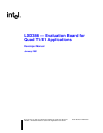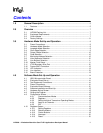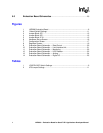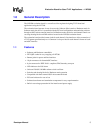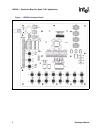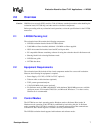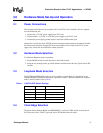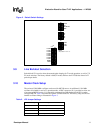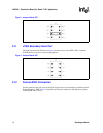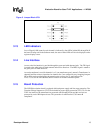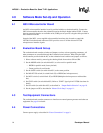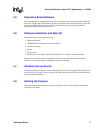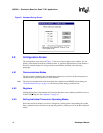
Evaluation Board for Quad T1/E1 Applications — LXD386
Developer Manual 7
2.0 Overview
Caution: CMOS devices are static (ESD) sensitive. Take all industry standard precautions when handling the
evaluation board, LXT386 chip, and other sensitive electronic components.
Before proceeding with any evaluation board operations, review the specifications for the LXT386
transceiver.
2.1 LXD386 Packing List
The evaluation board kit contains the following components:
• LXD386 evaluation board with the LXT386 installed.
• 2.048 MHz oscillator installed, additional 1.544 MHz oscillator supplied.
• i8051 microcontroller interface board and PC serial port cable.
• PC compatible diskettes containing software for using the evaluation board in Software mode.
• Shorting block kit for selecting Hardware mode.
• LXD386 user guide.
• LXT386 data sheet.
2.2 Equipment Requirements
The evaluation board kit includes all the circuit components needed for a successful evaluation.
However, the following lab equipment is required:
• Power Supply +3.3V DC (+5VDC for TVCC optional)
• Telecom cable or cable simulator (optional).
• T1/E1 pattern generator/analyzer.
• 1.544/2.048 MHz clock source (optional).
• For Software mode: an IBM compatible PC with minimum 386 40 MHz processor, available
serial port, mouse, VGA monitor, DOS 5.0+, and Microsoft Windows
3.1 or later version,
Windows 9x is recommended.
2.3 Control Modes
The LXT386 has two basic operating modes: Hardware mode or Software (Host) mode. In
Hardware mode, operation of the LXT386 is established by hard-wiring the pins. In Software
mode, operation of the LXT386 is controlled by an external microprocessor that communicates
with the LXT386’s internal registers via either a serial or parallel interface.
The LXD386 evaluation board supports both hardware and software modes.



